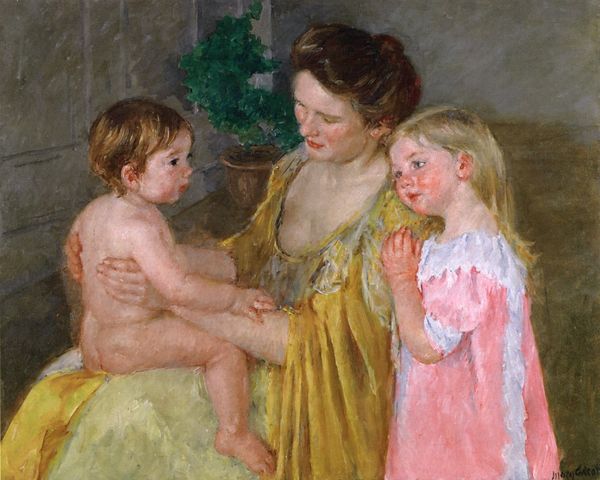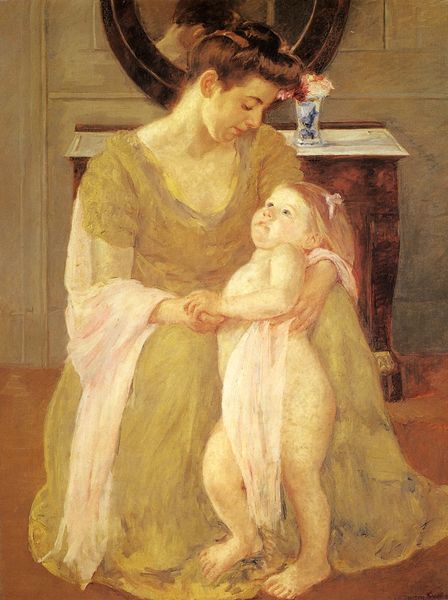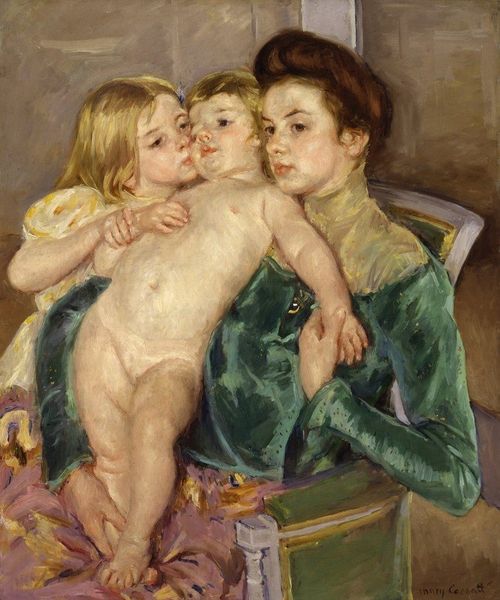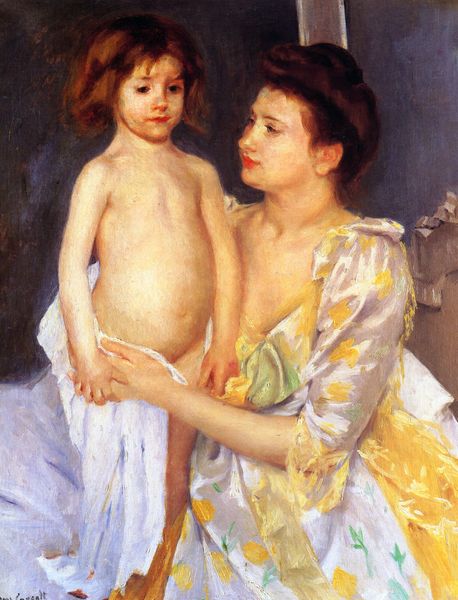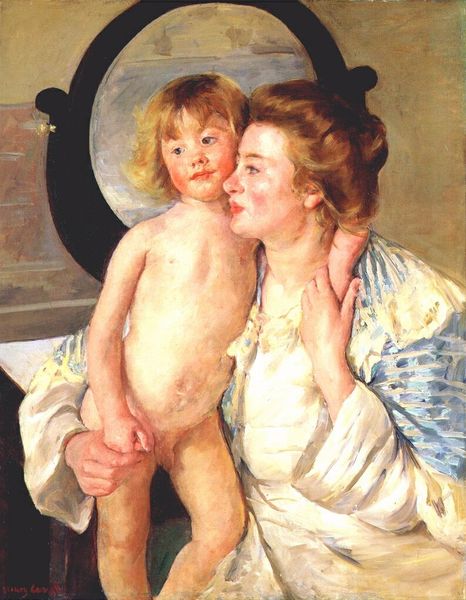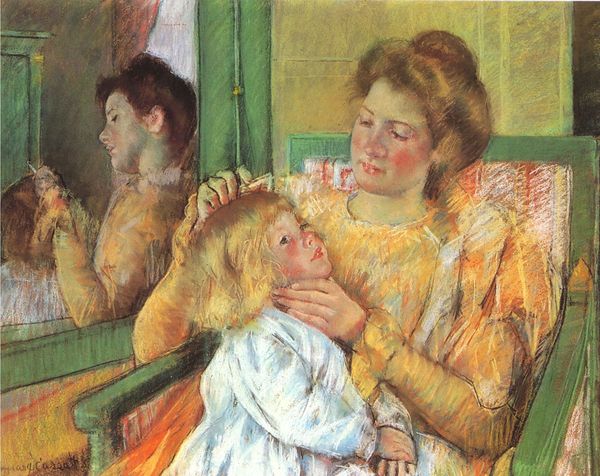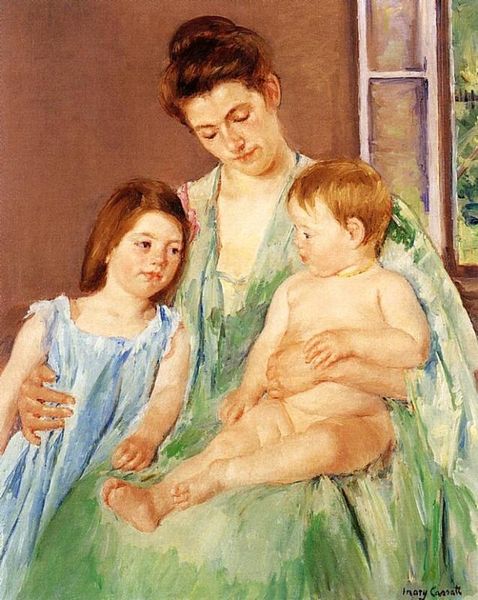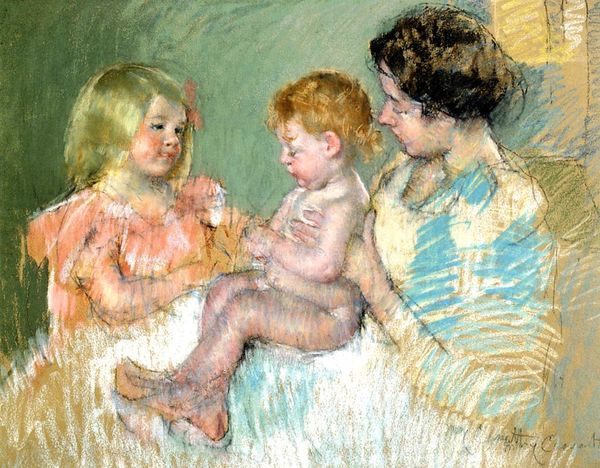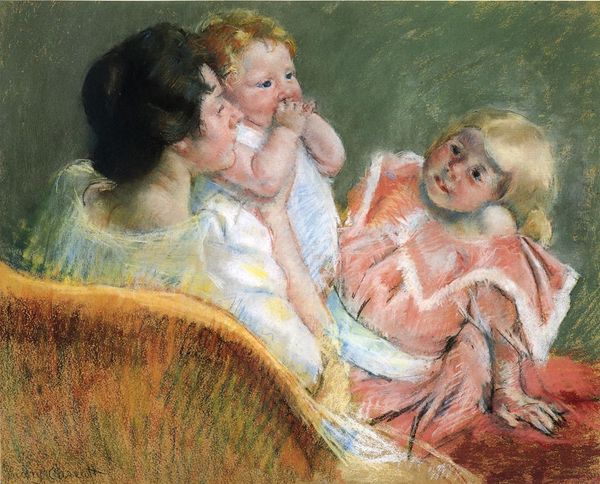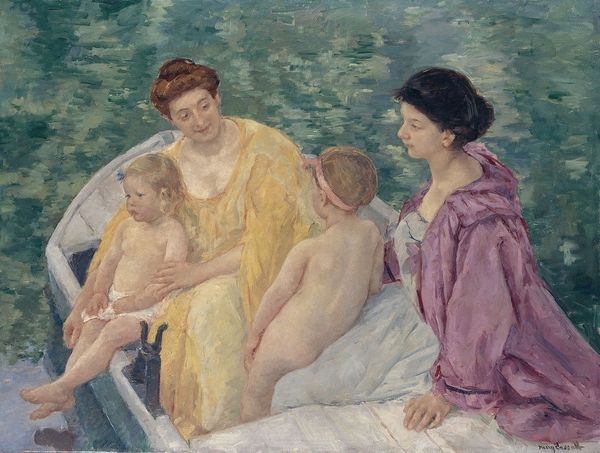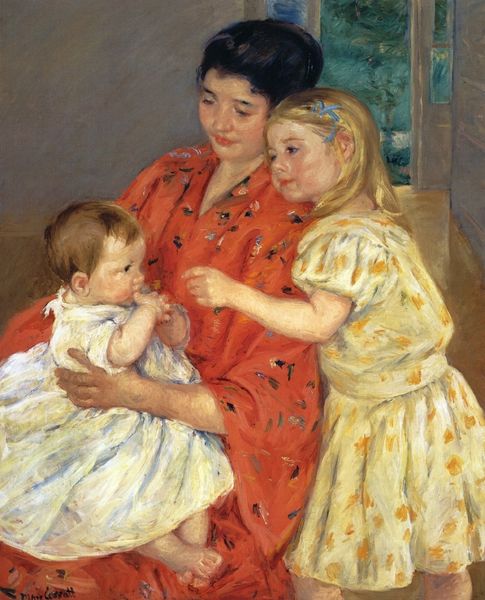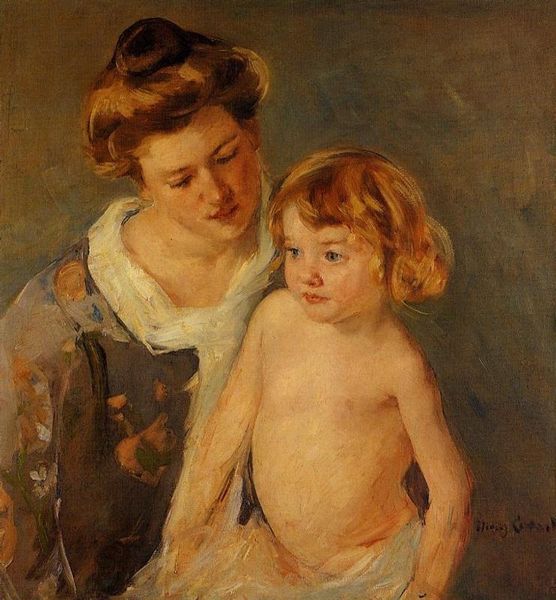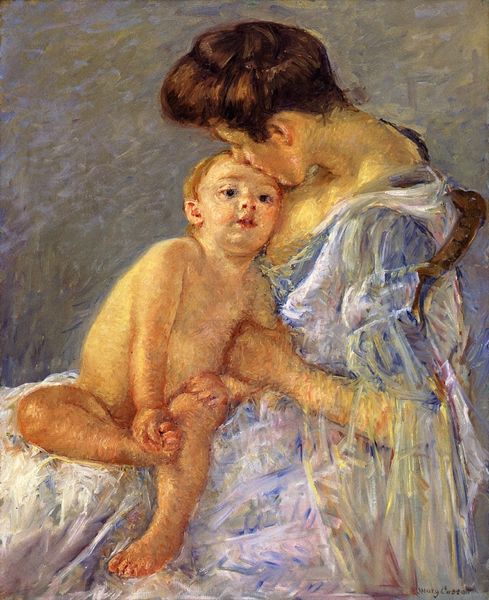
Copyright: Public Domain: Artvee
Curator: Oh, this is charming. There's such an intimacy to it, like catching a glimpse of a private moment, isn't it? Editor: Indeed. We’re looking at Mary Cassatt's “Mother and Child,” created around 1905. It's an oil painting, fairly typical of her Impressionist style, but so much more. The domestic sphere elevated, yes? Curator: Elevated, precisely! That muted yellow palette just sings of warmth and gentle light. It makes me think of summer afternoons and hushed whispers. The little girl looks positively enthralled with the mirror. What is she seeing in herself for the very first time? Editor: Beyond a simple genre scene, it speaks to the very constructed nature of female identity, viewed from the interior, personal gaze. Motherhood, then, not merely a biological reality, but a social and ideological project. Notice the framing: a world within a world. The mirror multiplies the participants involved, yet we are made intimate. Curator: Absolutely. Her brushstrokes seem to dance on the canvas, loose and free, but she captures the tenderness in their gazes. A true artist captures this subtle thing. Almost as if the whole scene came to life and now exists for me alone, no? It has always amazed me what someone can make a painting mean for an individual. Editor: That looseness challenges traditional portraiture. The sunflower could be viewed as a marker of visibility—something that connects her to nature. Still, it simultaneously serves to deflect that very act of seeing! Curator: The vulnerability is really quite moving. Do you find there is an intentional lack of embellishment there? How different from how other portraits in our collections treat their subjects. Is this a portrait or a real-life capturing? Editor: Precisely. This "ordinariness" reveals a carefully chosen presentation, aimed at disrupting bourgeois ideals of motherhood. It is in confronting that raw maternal bond. Curator: So well-observed. The longer I look, the more I sink into the everyday of the artist. Editor: As an artist in times past, it is not merely that one must be present to paint life; she must in fact, find herself embedded within.
Comments
No comments
Be the first to comment and join the conversation on the ultimate creative platform.
